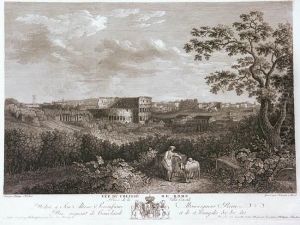Felix Morel-Lamy Paintings
Félix Morel-Lamy, born in 1821 and deceased in 1876, was a French artist known primarily for his contributions as a painter and illustrator. His life and career unfolded during a vibrant period of French art, nestled within the broader context of the 19th century, a time characterized by dramatic shifts in artistic styles and the emergence of new artistic movements. Morel-Lamy's work, though not as widely recognized as some of his contemporaries, provides a fascinating glimpse into the artistic transitions of his time, blending elements of Romanticism with emerging Impressionist sensibilities.
Félix Morel-Lamy received his artistic training in Paris, the epicenter of the art world in the 19th century. Paris, during this period, was a melting pot of artistic ideas, with the traditional academies beginning to be challenged by new forms of expression and a push towards modernism. Morel-Lamy navigated these changing tides by developing a style that, while reflective of the academic standards of beauty and composition, also embraced a softer, more delicate approach to his subjects, often focusing on landscapes and portraits.
Throughout his career, Morel-Lamy exhibited his work at various salons and galleries, gaining modest recognition among art circles in France. His paintings often depicted the French countryside, capturing the transient effects of light and atmosphere with a sensitivity that hinted at the Impressionist movement that was to fully emerge later in the century. Despite his talents, Morel-Lamy remained somewhat on the periphery of the major artistic movements of his time, dedicating himself to his personal vision rather than aligning closely with any specific group or style.
After his death in 1876, Félix Morel-Lamy's contributions to art were largely overshadowed by the giants of Impressionism and Post-Impressionism who dominated the art scene shortly thereafter. However, in recent years, there has been a renewed interest in artists like Morel-Lamy, whose works bridge the gap between traditional and modernist art forms. Today, his paintings are appreciated for their beauty and historical value, offering insights into the nuanced transition between major artistic periods in France.
